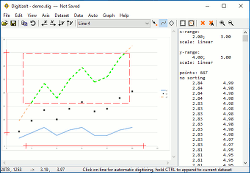

However, you are not limited to programmed legends. Displaying Supporting Data in Worksheet Header Rows.For information on how to set that up, see:

It is generally preferable to use plot-associated metadata in combination with dialog box settings, to create the legend symbol and text. This image of a typical legend's Object Properties dialog box shows the LabTalk notation in the center of the dialog and the "translated" legend symbol and legend text - what you actually see on the graph page - in the lower part of the dialog.

Normally, what displays is the "translated" symbol and legend text. You will not see this notation unless you are editing the legend object. The legend object is given a specific name - "Legend" - and programmatically linked to your Origin project data using LabTalk notation. The graph legend is a special text object that is automatically created on the graph page. The four graph legends above share the following components: For information on scale objects, see Color Scales and Bubble Scales. Origin supports four legend objects and two scale objects.


 0 kommentar(er)
0 kommentar(er)
